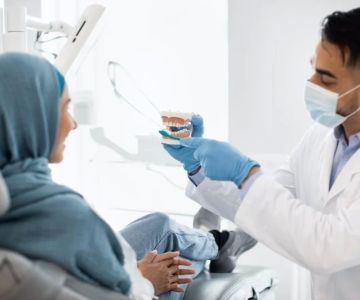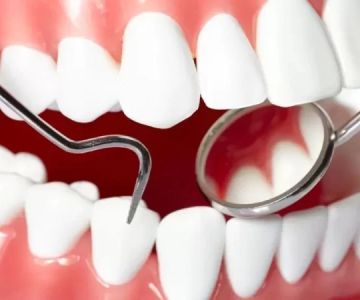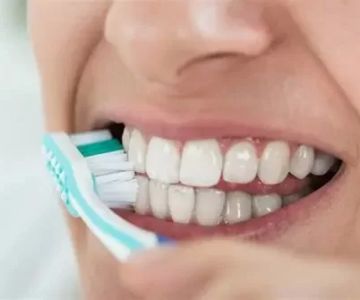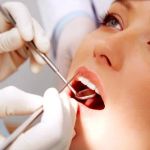Understanding the Oral Hygiene State of Emergency in the USA
Oral hygiene is often overlooked in discussions about public health, yet it plays a crucial role in overall wellness. Over recent decades, the United States has faced increasing concerns regarding the state of oral health, leading some experts and organizations to describe the situation as a "state of emergency." This term reflects the growing crisis in dental health, driven by factors such as inadequate access to care, rising rates of tooth decay, gum disease, and disparities in underserved communities.
The idea of an oral hygiene state of emergency gained prominence as research revealed alarming statistics: nearly one in four adults aged 20 to 64 suffer from untreated tooth decay, and more than 47% experience some form of periodontal disease. These numbers illustrate not just individual health challenges but a widespread systemic problem impacting millions.
1. Historical Context: When Did the Crisis Become Apparent?
The recognition of oral hygiene as a critical public health concern started building in the early 2000s, but it was the COVID-19 pandemic that cast a harsh light on existing gaps. In 2020, many dental offices were closed or limited to emergency care, worsening oral health conditions nationwide. This period highlighted how fragile access to dental services could be, particularly for vulnerable populations.
Organizations such as the American Dental Association and the Centers for Disease Control and Prevention began to emphasize the urgency of improving oral hygiene practices and access. Though no formal nationwide "state of emergency" declaration was issued by government authorities, the phrase has been widely adopted by dental professionals and public health advocates to underscore the seriousness of the situation.
2. Causes Behind the Oral Hygiene Emergency
Several interconnected factors contribute to the ongoing oral hygiene crisis in the USA:
- Lack of Access to Care: Millions of Americans lack dental insurance or live in areas with insufficient dental providers. Rural communities and low-income families are disproportionately affected.
- Poor Oral Hygiene Habits: Despite public awareness efforts, many individuals do not follow recommended daily brushing and flossing routines.
- Diet and Lifestyle Factors: Increased consumption of sugary foods and beverages contributes to tooth decay and gum disease.
- Systemic Health Links: Oral health is closely tied to conditions like diabetes and heart disease, making oral hygiene a broader health concern.
These elements create a perfect storm, where untreated dental problems escalate, leading to pain, infection, and even life-threatening complications in severe cases.
3. Impact of the Oral Hygiene Crisis on Public Health
Poor oral health doesn’t just affect teeth and gums; it has wide-ranging effects on quality of life, productivity, and healthcare costs. Children with untreated cavities may face difficulties eating and speaking, and adults with dental pain often experience reduced work attendance.
Healthcare systems bear the burden of emergency room visits for dental problems that could have been prevented with regular care. Additionally, the psychological impact of poor oral health, including lowered self-esteem and social isolation, compounds the crisis.
4. Notable Stories and Case Examples
One illustrative story comes from a community clinic in Detroit, where dental hygienists observed a spike in severe decay cases among children during the pandemic years. The clinic launched outreach programs teaching families simple oral hygiene techniques and distributing dental kits, showing measurable improvements within months.
Another example is a nationwide survey conducted in 2021 revealing that over 20% of adults delayed dental care due to financial hardship or fear of COVID-19 exposure, underscoring how external events exacerbate the oral hygiene emergency.
5. Addressing the Crisis: Practical Steps for Individuals and Communities
Improving oral hygiene requires a combination of education, access, and preventive care. Individuals should:
- Brush teeth twice daily with fluoride toothpaste.
- Floss regularly to remove plaque between teeth.
- Limit sugary snacks and drinks.
- Visit dental professionals for regular check-ups and cleanings.
Communities and policymakers play a vital role by expanding dental coverage, supporting mobile clinics, and integrating oral health with general healthcare services.
6. How Dentistry Toothtruth Supports Oral Health Solutions
For those seeking trusted guidance and services to navigate the oral hygiene crisis, Dentistry Toothtruth offers expert recommendations tailored to individual needs. Whether you need preventive care tips, treatment options, or referrals to quality providers, Dentistry Toothtruth serves as a valuable resource to improve dental health outcomes.
By raising awareness and making oral hygiene a priority, we can collectively move beyond the state of emergency towards a future where healthy smiles are accessible to all.







 Shady Brook Family Dental4.0 (244 review)
Shady Brook Family Dental4.0 (244 review) Southside Orthodontics - Your Colonial Heights and Chesterfield Orthodontist4.0 (274 review)
Southside Orthodontics - Your Colonial Heights and Chesterfield Orthodontist4.0 (274 review) Smile Fixer RVA: Stacy Lukanuski DDS, D.B.A4.0 (249 review)
Smile Fixer RVA: Stacy Lukanuski DDS, D.B.A4.0 (249 review) Access Health Dental4.0 (280 review)
Access Health Dental4.0 (280 review) Park Avenue Dental Associates4.0 (799 review)
Park Avenue Dental Associates4.0 (799 review) MDS Dental Solutions, LLC0.0 (0 review)
MDS Dental Solutions, LLC0.0 (0 review) The Importance of Oral Health Education During Pregnancy for a Healthy Pregnancy
The Importance of Oral Health Education During Pregnancy for a Healthy Pregnancy Best Tips for Brushing Your Teeth Properly for Healthy Gums: Essential Techniques for Oral Health
Best Tips for Brushing Your Teeth Properly for Healthy Gums: Essential Techniques for Oral Health Why Skipping Dental Checkups Can Lead to Bigger Oral Health Problems
Why Skipping Dental Checkups Can Lead to Bigger Oral Health Problems Advantages of Porcelain Dental Restorations
Advantages of Porcelain Dental Restorations How Can Diabetes Cause Tooth and Gum Problems? Preventing and Managing Oral Health Issues
How Can Diabetes Cause Tooth and Gum Problems? Preventing and Managing Oral Health Issues Healthy Habits for Promoting Good Oral Health and Hygiene: Tips for a Healthy Smile
Healthy Habits for Promoting Good Oral Health and Hygiene: Tips for a Healthy Smile